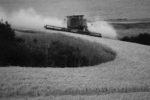Advertise Follow Us
Articles Tagged with ''Winter wheat''
What I've Learned from No-Tilling
It Takes Time To Learn How To No-Till Slopes That Exceed 50%
Idaho direct-seeder Russ Zenner spent more than 20 years developing rotations and testing equipment to continuously no-till some of the world’s steepest slopes.
Read More
No-Till Makes Long-Distance Farming Work In Big Sky Country
Minimal equipment is a must for far-flung farms, says Montana no-tiller Todd Tibbetts.
Read More
8 Areas To Focus On For Higher Wheat Yields
Residue management, proper seeding rates, timely nitrogen applications and scouting for diseases are some of the keys to pushing no-till wheat yields to worthwhile levels
Read More







